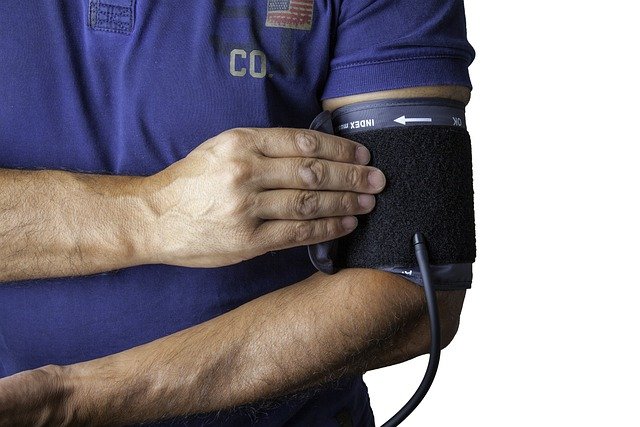Early Warning Signs of Stroke You Should Know
A stroke can start quietly, with warning signs that don’t look dramatic at all. Sudden numbness in the face, arm, or leg, blurred vision, dizziness, or slurred speech may appear for just a few minutes and then fade away. Many people mistake these symptoms for stress or fatigue and miss the chance to act early. Recognizing these subtle signs could make the difference between a full recovery and lasting damage.

What are the early warning signs and symptoms of a stroke?
The sudden onset of neurological symptoms is a hallmark of stroke. Common early warning signs include:
-
Facial drooping: One side of the face may become numb or droop, particularly noticeable when the person tries to smile.
-
Arm weakness: Difficulty raising one or both arms, or experiencing numbness or weakness in one arm.
-
Speech difficulties: Slurred speech, trouble speaking, or difficulty understanding others.
-
Vision problems: Sudden blurred vision, double vision, or loss of vision in one or both eyes.
-
Severe headache: A sudden, intense headache with no known cause.
-
Balance issues: Sudden dizziness, loss of balance, or difficulty walking.
These symptoms often develop rapidly and may occur in combination or isolation. It’s important to note that even if symptoms resolve quickly, they should still be taken seriously as they could indicate a transient ischemic attack (TIA), often referred to as a “mini-stroke.”
What does a mini stroke (TIA) feel like?
A transient ischemic attack (TIA) is a temporary disruption of blood flow to the brain that typically lasts only a few minutes. While the symptoms of a TIA are similar to those of a full-blown stroke, they are usually shorter in duration and do not cause permanent damage. However, a TIA is often a warning sign of an impending stroke and should be treated as a medical emergency.
People who experience a TIA may describe:
-
Temporary numbness or weakness on one side of the body
-
Brief episodes of confusion or difficulty speaking
-
Momentary vision disturbances
-
A short period of dizziness or loss of balance
-
A fleeting but intense headache
These symptoms often resolve within minutes to hours, which may lead some individuals to dismiss them. However, experiencing a TIA significantly increases the risk of having a full stroke in the near future, making it crucial to seek immediate medical attention.
What are the hidden signs of stroke people often miss?
While the classic symptoms of stroke are well-known, there are several less obvious signs that people may overlook:
-
Sudden fatigue or drowsiness: Unexplained exhaustion that comes on suddenly could be a sign of a stroke.
-
Hiccups: Persistent hiccups, especially when accompanied by other neurological symptoms, may indicate a stroke affecting the brain stem.
-
Nausea or vomiting: Sudden onset of nausea or vomiting, particularly when combined with dizziness, could be a sign of a stroke in the cerebellum.
-
Confusion or behavioral changes: Sudden changes in mental state, such as confusion, agitation, or hallucinations, may indicate a stroke.
-
Pain or numbness: Sudden onset of pain or numbness, especially on one side of the body, could be a stroke symptom.
-
Trouble swallowing: Difficulty swallowing or a sudden change in the gag reflex may be a sign of a stroke affecting the brain stem.
Recognizing these less common signs can be crucial, especially in populations at higher risk for stroke, such as older adults or individuals with cardiovascular risk factors.
What are the differences between stroke symptoms and normal fatigue?
It’s important to differentiate between the symptoms of a stroke and those of normal fatigue, as the two can sometimes be confused. Key differences include:
-
Onset: Stroke symptoms typically come on suddenly, while fatigue usually develops gradually.
-
Asymmetry: Stroke often affects one side of the body, while fatigue is generally felt throughout the body.
-
Specificity: Stroke symptoms are often specific (e.g., facial drooping, arm weakness), while fatigue is a more general feeling of tiredness.
-
Duration: Stroke symptoms persist or worsen, while normal fatigue typically improves with rest.
-
Associated symptoms: Stroke often comes with other neurological symptoms, while fatigue is usually not accompanied by speech difficulties or vision changes.
-
Recovery: Rest doesn’t typically improve stroke symptoms, whereas it can alleviate normal fatigue.
If there’s any doubt about whether symptoms are due to fatigue or a potential stroke, it’s always safer to seek medical evaluation promptly.
When should you seek medical advice for possible stroke symptoms?
The golden rule for stroke symptoms is to act FAST:
-
Face: Check for facial drooping
-
Arms: Test for arm weakness
-
Speech: Listen for slurred or confused speech
-
Time: If any of these signs are present, it’s time to call emergency services immediately
It’s crucial to seek medical attention immediately if you or someone around you experiences any sudden onset of the following:
-
Numbness or weakness in the face, arm, or leg, especially on one side of the body
-
Confusion, trouble speaking, or difficulty understanding speech
-
Vision problems in one or both eyes
-
Dizziness, loss of balance, or lack of coordination
-
Severe headache with no known cause
Remember, even if symptoms seem to improve or resolve quickly, it’s still important to get checked by a medical professional. The phrase “time is brain” emphasizes that rapid treatment is critical to minimize brain damage and improve outcomes in stroke cases.
In conclusion, recognizing the early warning signs of a stroke, including both common and less obvious symptoms, can be life-saving. By understanding the differences between stroke symptoms and normal fatigue, and knowing when to seek medical advice, individuals can take prompt action in the event of a potential stroke. Always err on the side of caution and seek immediate medical attention if you suspect a stroke, as timely intervention is crucial for optimal recovery and prevention of long-term complications.
This article is for informational purposes only and should not be considered medical advice. Please consult a qualified healthcare professional for personalized guidance and treatment.




